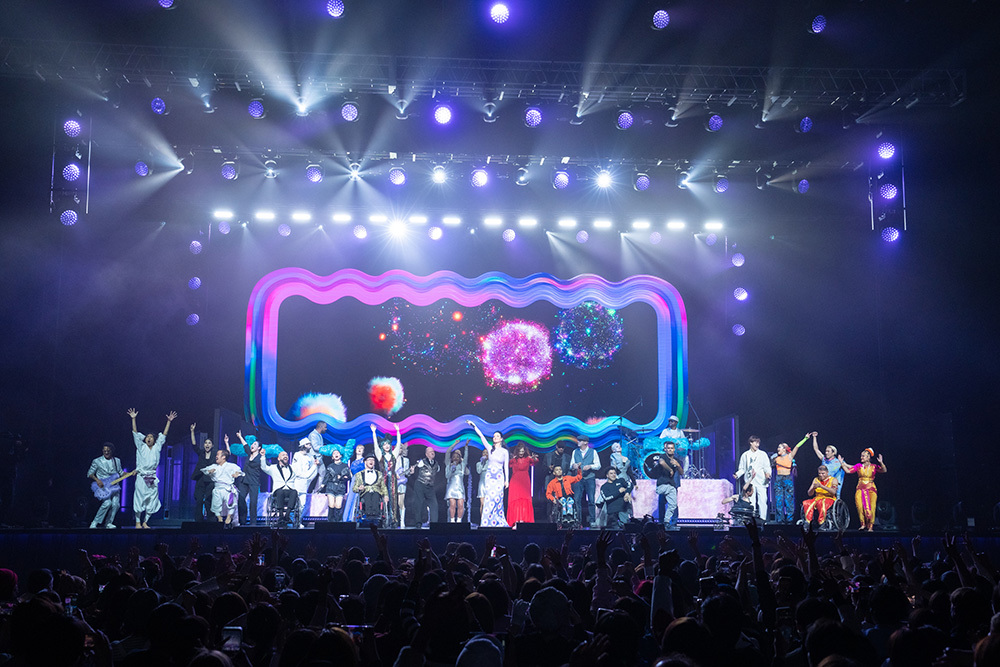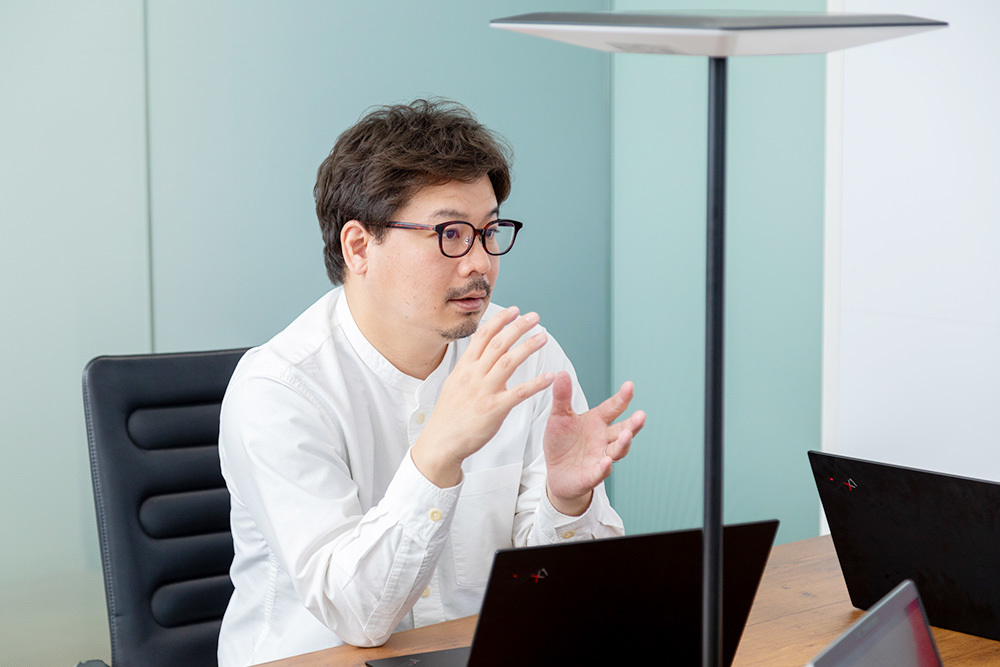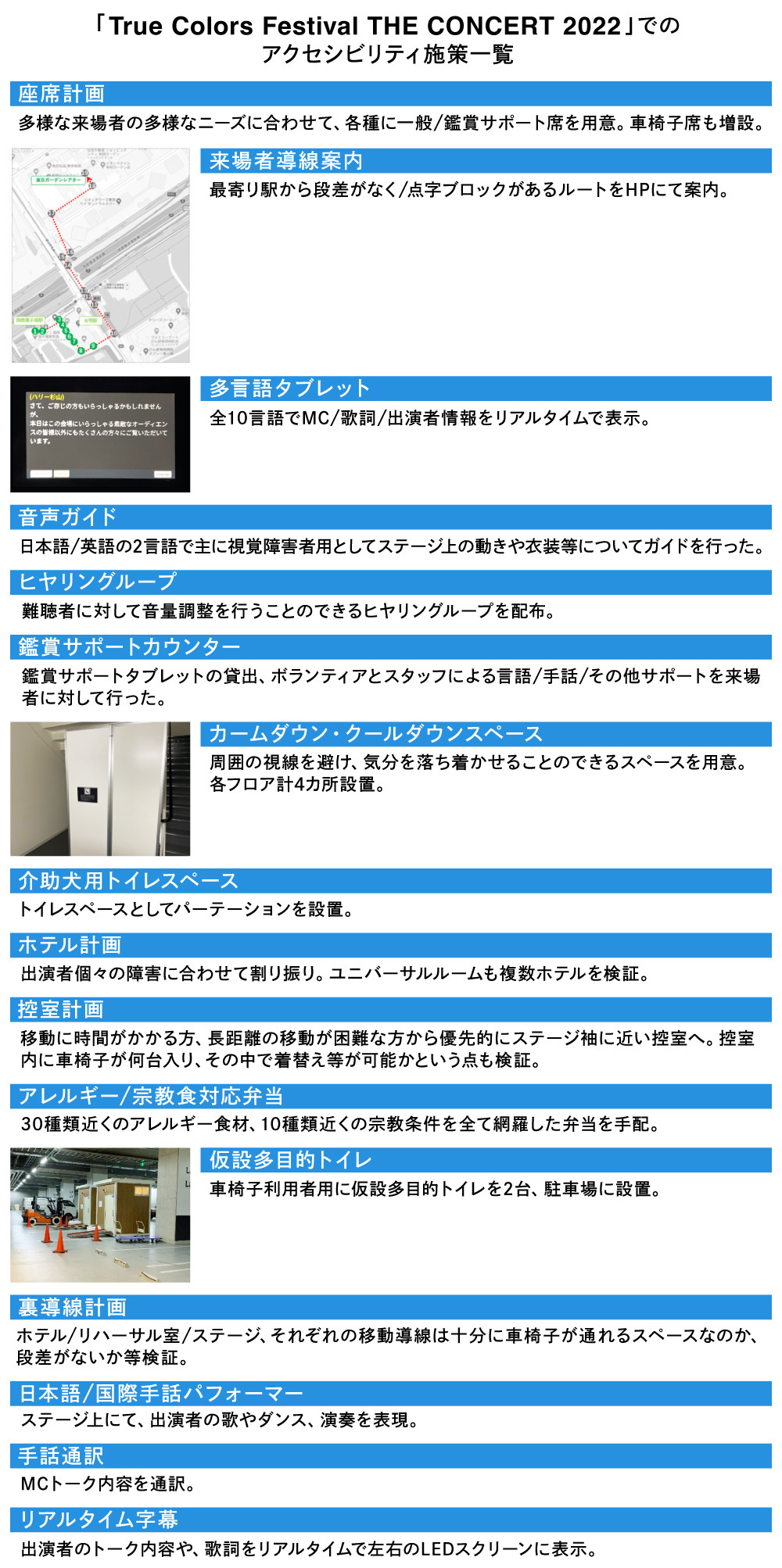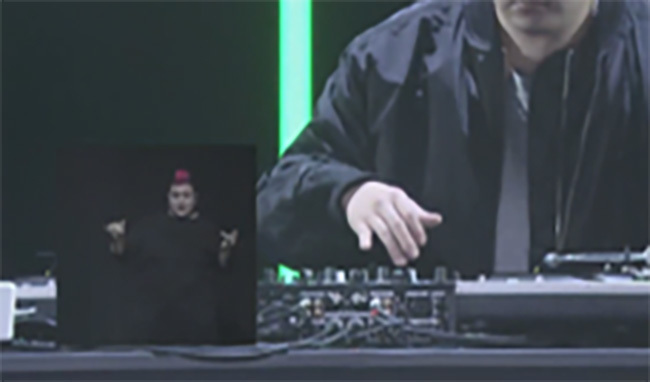
The world's largest live entertainment event created with artists with disabilities, "True Colors Festival THE CONCERT 2022." Special guests included global superstar Katy Perry and Kyary Pamyu Pamyu. Approximately 100 performers from 12 countries took the stage together.
When disability, gender, language, and generations blend together, this is what an event becomes.
The push for diversity is accelerating.
March 15, 2023. The "Basic Plan for Persons with Disabilities" (details here ) for the next five years was approved by the Cabinet. With the "Revised Act on the Elimination of Discrimination against Persons with Disabilities" (details here ), which mandates "reasonable accommodations" for private companies, set to take effect in April 2024, a shift in awareness is unavoidable.
This revision particularly emphasizes improving accessibility and requires companies to provide reasonable accommodations for an even wider range of people.
Against this backdrop, Dentsu Inc. and Dentsu Live Inc. have publicly released the "Everyone's Event Guidelines," aiming to realize "events that leave no one behind" in response to these societal changes.
Amidst this, the "True Colors Festival THE CONCERT 2022" (hereafter TCC), hosted by The Nippon Foundation, took place at Tokyo Garden Theatre in Ariake, Tokyo, in November 2022.
This event was the culmination of the "True Colors Festival Super Diversity Arts Festival" (hereafter TCF), held in Japan since 2019, and stands as the world's largest live entertainment production created with artists transcending boundaries of disability, gender, language, and generation.
This event embodied The Nippon Foundation's policy of aiming for a festival environment accessible to everyone. It also drew attention for its unprecedented range of accessibility measures. Perhaps this is because it was seen as a real-world experience of reasonable accommodations, which will become the new "norm."
This time, we spoke with Naoto Yamada and Michi Tanaka, the production producers from Dentsu Live Inc. who supported the behind-the-scenes of TCC, to consider the future of a diverse society and events that embrace diversity.
Katy Perry Joins In! "True Colors Festival THE CONCERT 2022"
TCC featured global superstar Katy Perry, Kyary Pamyu Pamyu, and other super-famous artists, with approximately 100 performers from 12 countries collaborating.
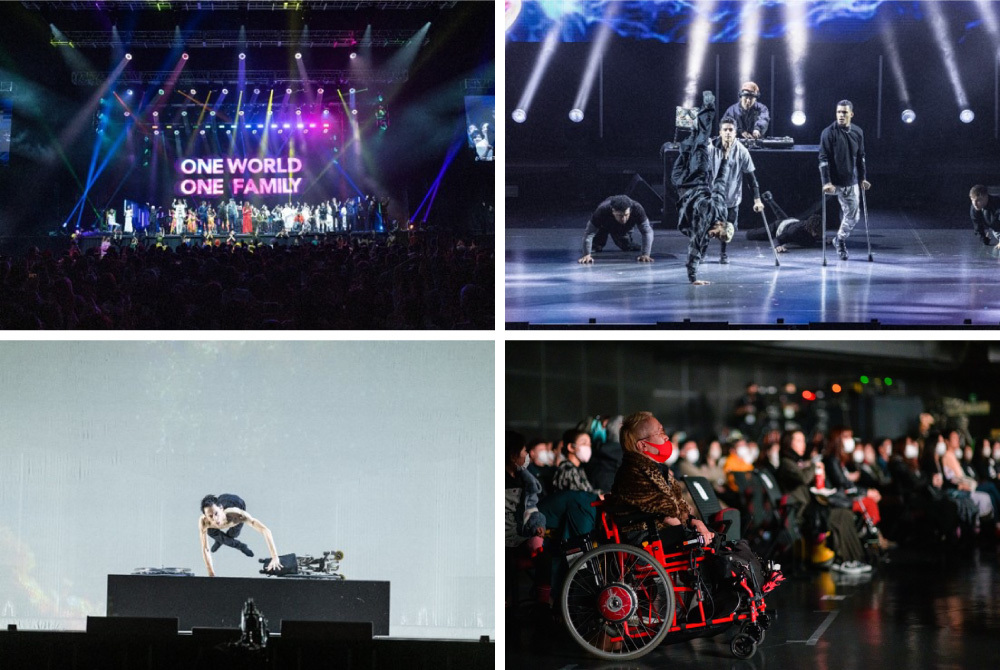
The concert brought together artists with diverse individualities and backgrounds—including differences in disability, gender, generation, language, and nationality. They performed live singing, instrumental music, and dance performances.
While this event served as the culmination of TCF, its origins trace back to the "International Festival of Arts for Persons with Disabilities," an initiative originally conducted by The Nippon Foundation as part of its overseas disability support activities. The Nippon Foundation is a public interest incorporated foundation that has supported persons with disabilities both domestically and internationally for over 50 years.
The "International Festival of Arts for Persons with Disabilities" began with the aim of creating opportunities for artists with disabilities to express themselves on stage. By having many people, including persons with disabilities and their families, experience these performances, it sought to change perceptions about disability and encourage independence.
Today, while continuing to prioritize "disability," it operates as a "Super Diversity Arts Festival" created collectively by people with diverse individualities and backgrounds—including disability, gender, generation, language, and nationality. It seeks to communicate the potential for a society where people live together, each expressing their unique colors, transcending various sexual orientations, gender identities, gender expressions, nationalities, languages, and generations.
The Ideal Form of an "Event Where No One Is Left Behind"... Behind the Scenes
From here, Akiko Nomura, Senior Consultant at Dentsu Inc. Public Account Center and involved in creating the "Everyone's Event Guidelines" aimed at realizing "leaving no one behind" events, served as moderator. She heard about the experiences at TCC from the two representatives of Dentsu Live Inc.
Nomura: I imagine you both had an incredibly valuable experience at TCC. Especially regarding accessibility measures, event staff and attendees have said, "We've never seen an event incorporate this many measures." You must have gained a tremendous amount of know-how and insights.
Yamada: Fundamentally, we incorporated The Nippon Foundation's accessibility policy—"aiming for a festival environment accessible to everyone"—into our planning. Honestly, we were surprised by how much we didn't know and how many accessibility aspects needed coverage.
Nomura: While accessibility measures at events have evolved around the Tokyo 2020 Olympic and Paralympic Games, I don't think any event has incorporated as many diverse measures as this one. It must have been a very challenging experience.
The "Basic Plan for Persons with Disabilities (5th Plan)," approved by the Cabinet in March this year, added the realization of inclusion for all people regardless of race, nationality, language, generation, disability, or gender, signaling the government's proactive steps. Among its 11 priority areas, it specifically promotes the advancement of cultural, artistic, and sporting activities, along with cooperation and collaboration within the international community.
This event truly embodies those goals. Drawing from TCC's experience, I'd like to hear about memorable stories and the challenges you faced,
● Planning Aspects: Seating arrangements, traffic flow planning, etc.
● Hardware Aspects: Accommodations, transportation, etc.
● Software Aspects: Event presentation, etc.
I would appreciate hearing about these points.
● Planning Aspects: Seating arrangements, traffic flow planning, etc.
Nomura: First, please tell us about the planning aspects.
Yamada: The seating plan for wheelchair users generated significant positive feedback this time. Typically, wheelchair users and their companions are seated separately. This time, we offered ticket options like "Wheelchair + Companion" or "Wheelchair ×2" to suit preferences. Allowing wheelchair users to enjoy the event together with their companions was very well received.
Nomura: With so few precedents, did you reference any existing examples?
Yamada: Rather than referencing specific examples, we collaborated to brainstorm and develop the seating plan from scratch, exploring possibilities step by step.


We designed seating to accommodate diverse needs, including adding wheelchair spaces and providing two seats (for the wheelchair user and companion) with a single ticket purchase for the support seat. Also, considering wheelchair users and others, we requested seated viewing for all attendees.
Yamada: We also requested seated viewing for all attendees this time. Standing makes it difficult for wheelchair users to see the stage.
Nomura: Involving the audience to make it everyone's event—that's new too.
●Hardware aspects: Accommodations, transportation, etc.
Nomura: So, how were the hardware aspects?
Tanaka: The most challenging part was planning the event schedule. We had to create it while considering the various conditions of the artists.
For example, some individuals with mental disabilities might panic if conditions during practice differ even slightly from what they're used to. We had to anticipate such issues beforehand.
Yamada: Guiding them from the green room to the venue also required meticulous planning. We had to think things like, "When and how should this person be guided?" or "This person needs a room close to the venue." We had no prior experience with this, and each person's conditions and requests were different. There were many things we couldn't know until we faced them on-site.
Nomura: There were about 100 artists, right?
Tanaka: That's right. And the numbers increase even more when you include their companions. Every day felt like a roller coaster.
Additionally, to meticulously accommodate various accommodation needs, we had artists stay at several different hotels. For instance, some artists require special meal options due to allergies or religious reasons. And a particularly problematic issue was the severe shortage of hotel rooms accessible by wheelchair. In Japan, even now, most hotels only have a handful of barrier-free rooms with no steps.
Nomura: For instance, we've personally experienced how scarce universal toilets are in Japan.
●Soft Aspects: Event Presentation, etc.
Nomura: Now, let's discuss the soft aspects.
Tanaka: This time, the "sign language performers" were particularly well-received by our guests. It's "sign language as entertainment." Beyond conveying the meaning of the song lyrics, they express the rhythm and musical scale through sign language, combined with dance-like movements.

On stage, performers expressed the songs, dances, and music. Furthermore, by projecting the sign language performers' movements onto giant screens placed on both sides of the stage, the production ensured that audiences could enjoy watching the sign language from any seat.
Tanaka: The most challenging part was the sign language footage displayed on the giant screens flanking the stage. We rehearsed over and over, incorporating feedback from the performers like, "If this angle blocks this part, the information won't get across."
Yamada: Even a momentary cut could interrupt the flow of information. Switching cameras based on instinct might look stylish from a directorial perspective, but it would compromise the audience's full enjoyment.
Nomura: So the conventional approach to directing doesn't apply here. There are many new points we need to explore.
This time, we also provided an unprecedented amount of support. What kind of support was offered for the audience?
Tanaka: For viewing support, we offered real-time subtitles, audio guides, multilingual tablets, and various other options.
Nomura: For example, what kind of guidance does the audio guide provide?
Tanaka: For visually impaired visitors, we supplement non-audible information—like songs—with audio descriptions. This includes details about the set design, lighting, and the nature of the dance movements.
Nomura: How did you produce it?
Tanaka: For the audio guide, we finalized the content as much as possible about one or two weeks before the actual event and created a script. On the day of the concert, the narrator then delivered it in real-time, like a live commentary. However, as often happens with events, the staging sometimes changed at the last minute. We'd have to say, "Sorry! There's been a change," and adjust accordingly.
Nomura: While "Everyone's Event Guidelines" convert text to Uni-Voice(※), this event provided real-time audio descriptions of the stage! That's quite different from pre-recorded audio guides at museums or exhibitions! You really don't know until you try it, do you? This is very insightful.
※Uni-Voice
A solution that reads printed content aloud simply by holding a smartphone over a "Uni-Voice code." Developed by the Japan Association for Visual Impairment Support (JAVIS), a specific non-profit organization. Uni-Voice's "General-purpose multilingual smartphone app" supports both iOS and Android, but the "Smartphone app for visually impaired users (VoiceOver/Siri compatible)" is iOS-only. Android is not supported (as of February 2023).
https://www.uni-voice.co.jp/
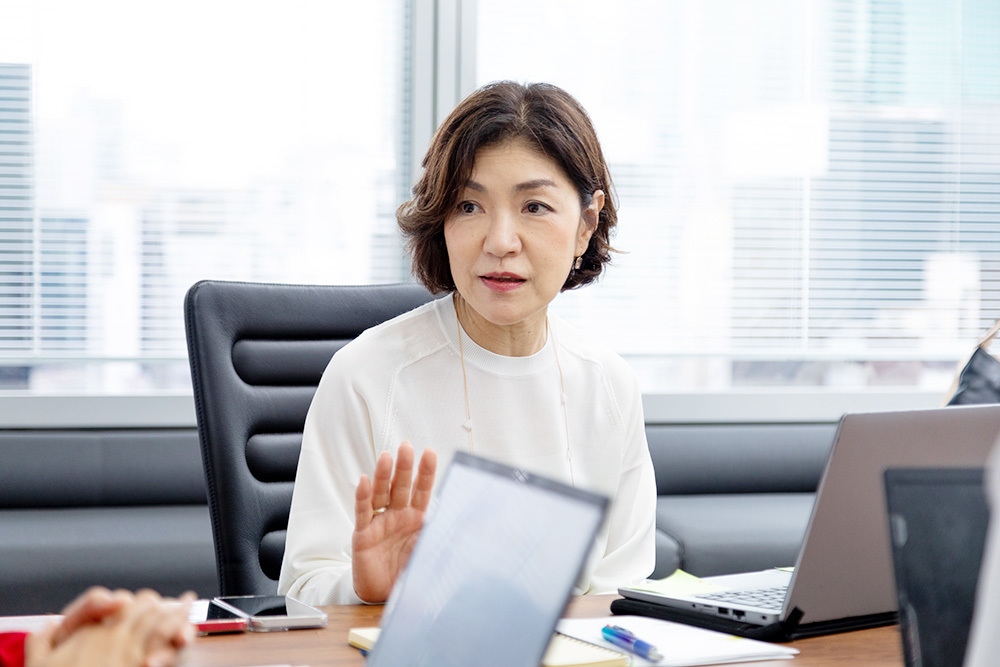
Let's build on our collective experience to create new standards
Nomura: While this event focused on diversity, the accessibility measures you implemented are crucial for any event. So, I'd like to ask about future challenges for the event industry. I imagine budget constraints are something we simply can't avoid.
Yamada: That's true. This event was fundamentally based on the concept of "aiming for a festival environment accessible to everyone," so the budget for ensuring accessibility was well-allocated. However, I think it can be challenging for regular events.
Therefore, I believe it's crucial to select the appropriate level of care based on the event's type, its key priorities, its core message, and the target audience it aims to attract.
Nomura: For example, a concert might focus on "audio guidance," while a street event might prioritize "accessibility."
Yamada: Yes. Through this process, I believe a "new standard" will emerge—something like "sign language is a given at concerts."
Also, I realized we need to further consider whether to provide specific care for people with disabilities. During this event, some artists said, "I don't need any support."
Nomura: When I spoke with para-athletes before, they also mentioned how tricky the level of care can be. Care is necessary, but it shouldn't be excessive. For example, they dislike being shouted at loudly with "Wheelchair coming through!"
Tanaka: I've also heard the idea that "care for one person can become a barrier for another." Visually impaired people use their canes to navigate, so raised bumps serve as guideposts. But for wheelchair users, those same bumps become obstacles—steps.
In that case, after discussions between the parties involved, they apparently concluded, "If it's X millimeters, it won't be a barrier for either group." That really highlighted the importance of dialogue. I think there are many similar examples.
Nomura: I think that's where the difficulty of coexistence lies. How do we deepen mutual understanding? To solve it, I believe we simply have to keep accumulating examples.
Tanaka: I agree. While there's no clear-cut answer, I want to find better solutions by having conversations with the people directly affected.
Yamada: We proposed various accessibility measures this time, but I believe there's still a lot of room to delve deeper into each one and find areas for improvement.
Nomura: By continuously changing what society considers "normal," we can truly realize a coexistence society. The challenge now is how to adapt to a world where societal needs and norms are shifting. While this task is being presented to the general public and businesses, we at the Dentsu Group, as communication specialists, must take the lead in tackling it.
We also want to continuously update our 'Everyone's Event Guidelines' and Dentsu Live Inc.'s SDGs initiatives based on the experiences gained from this event.

The "Everyone's Event Guidelines" are publicly available as a PDF file.
Download the latest version
here.



